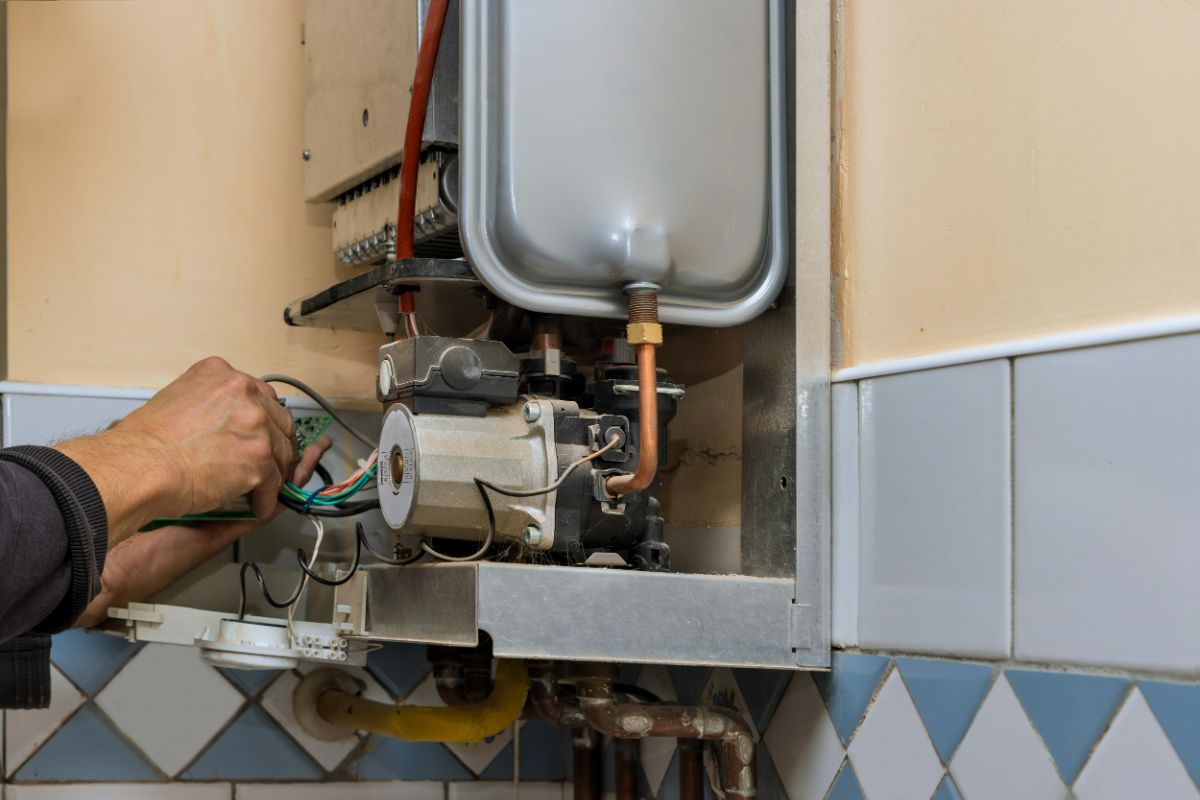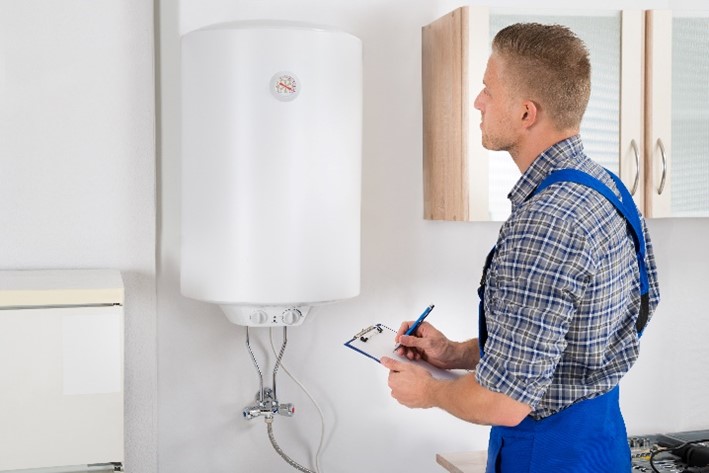How to Effectively Care for Your Home's Hot Water SystemProfessional Advice for Maintaining Your Home's Hot Water System
How to Effectively Care for Your Home's Hot Water SystemProfessional Advice for Maintaining Your Home's Hot Water System
Blog Article
What're your concepts on How to Maintain Your Water Heater & Prolong its Life?

Warm water is essential for day-to-day comfort, whether it's for a rejuvenating shower or washing meals. To guarantee your warm water system runs effectively and lasts much longer, regular maintenance is vital. This article supplies practical suggestions and insights on exactly how to maintain your home's hot water system to prevent interruptions and expensive repair services.
Intro
Keeping your home's warm water system could seem difficult, however with a few basic steps, you can ensure it operates smoothly for many years to find. This overview covers every little thing from recognizing your hot water system to DIY upkeep ideas and understanding when to contact professional help.
Importance of Maintaining Your Hot Water System
Regular maintenance not only extends the lifespan of your warm water system but also ensures it operates efficiently. Neglecting upkeep can result in decreased efficiency, greater power expenses, and even premature failure of the system.
Signs Your Warm Water System Requirements Maintenance
Knowing when your hot water system requires focus can protect against significant problems. Watch out for signs such as inconsistent water temperature level, unusual noises from the heater, or corroded water.
Recognizing Your Hot Water System
Before diving right into upkeep tasks, it's useful to recognize the fundamental components of your warm water system. Normally, this consists of the water heater itself, pipelines, anode poles, and temperature controls.
Monthly Upkeep Tasks
Normal regular monthly checks can help capture small problems before they rise.
Flushing the Water Heater
Purging your hot water heater eliminates sediment build-up, enhancing efficiency and lengthening its life.
Monitoring and Replacing Anode Rods
Anode rods prevent deterioration inside the storage tank. Inspecting and changing them when worn is crucial.
Evaluating and Changing Temperature Setups
Adjusting the temperature level settings ensures optimum performance and safety and security.
DIY Tips for Upkeep
You can carry out numerous maintenance jobs yourself to maintain your warm water system in top problem.
Checking for Leaks
Consistently check pipes and links for leaks, as these can cause water damage and greater bills.
Checking Stress Relief Valves
Examining the pressure safety valve ensures it operates properly and prevents extreme pressure accumulation.
Shielding Pipes
Shielding hot water pipelines reduces warm loss and can conserve energy.
When to Call a Specialist
While DIY upkeep is beneficial, some problems call for expert experience.
Complex Problems Requiring Professional Help
Examples consist of significant leakages, electric problems, or if your water heater is regularly underperforming.
Regular Professional Upkeep Conveniences
Professional upkeep can consist of comprehensive assessments, tune-ups, and making sure conformity with safety requirements.
Verdict
Normal upkeep of your home's hot water system is vital for performance, long life, and cost savings. By complying with these pointers and knowing when to seek expert assistance, you can make certain a reliable supply of hot water without unforeseen interruptions.
Water Heater Maintenance: The Basics
Maintaining your water heater will ensure it operates efficiently and has a longer lifespan. Neglecting regular maintenance can lead to costly repairs and an even bigger chunk of your savings if you have to replace it sooner than necessary. But there’s good news: Most water heater maintenance tasks are relatively simple and easy for homeowners with basic DIY skills.
Flush the Water Heater
Over time, sediment and minerals can build up in the tank, reducing its efficiency and potentially causing damage. To flush the tank, turn off the power or gas supply, attach a hose to the drain valve near the bottom and open the valve to drain the water until it runs clear. Ideally, flush the tank annually.
Replace the Anode Rod
The anode rod is a sacrificial metal rod that helps prevent corrosion inside the tank. Inspect and replace it every three to five years or per the manufacturer's recommendation. To replace the anode rod, turn off the power or gas supply, drain a few gallons of water from the tank, unscrew the old rod and replace it with a new one. If the anode rod is significantly corroded or covered in calcium buildup, it's a sign the water heater may need to be replaced soon.
Tune-Up
A yearly tune-up can help identify potential issues and ensure your water heater operates at peak efficiency. This typically involves checking the thermostat, burner assembly (for gas heaters) and any other components specified by the manufacturer. During a tune-up, the technician may also clean the burner and adjust the pilot light (for gas heaters) or examine the heating elements (for electric heaters).
How to Maintain Your Water Heater
Insulate the tank. Insulating the tank can improve energy efficiency and reduce heat loss, saving you money on energy bills. You can purchase precut insulation blankets designed specifically for water heaters or use standard fiberglass insulation wrapped securely around the tank. Check the temperature. The recommended water temperature for most households is around 120 degrees Fahrenheit (49 degrees Celsius). Higher temperatures can increase energy costs and potentially cause scalding. Use a kitchen thermometer to check the temperature at the faucet nearest the water heater. Monitor water pressure. Excessive water pressure can strain the water heater and cause leaks or even tank failure. Install a pressure-reducing valve if necessary. The ideal water pressure range is between 60 and 70 PSI (pounds per square inch). Test the temperature and pressure (T&P) relief valve. The T&P relief valve is a safety feature that releases pressure if the tank gets too hot or the pressure builds up too high. Test it annually by lifting the lever and allowing a small amount of water to release. Replace the valve if it doesn't release water or reseal properly. Check for leaks. Regularly inspect the tank, pipes and fittings for leaks or corrosion. Deal with issues promptly to prevent further damage. Even a small leak can lead to significant water damage over time. Consider a tankless water heater. If your traditional tank-style water heater is nearing the end of its lifespan ( typically 10 years), consider replacing it with a tankless water heater. These units heat water on demand, reducing standby energy losses and potentially saving you money on your energy bills. Schedule professional maintenance. While homeowners can perform many water heater maintenance tasks, it's still a good idea to schedule professional maintenance every few years. A plumber or HVAC technician can thoroughly inspect the unit, identify potential issues and ensure it operates safely and efficiently. https://www.homeserve.com/en-us/blog/home-improvement/hot-water-heater-maintanence/

I was made aware of that article on Tips For Maintaining Your Hot Water Heater from an associate on another domain. You should set aside a second to distribute this post if you liked it. Thanks for going through it.
Estimate Free Report this page